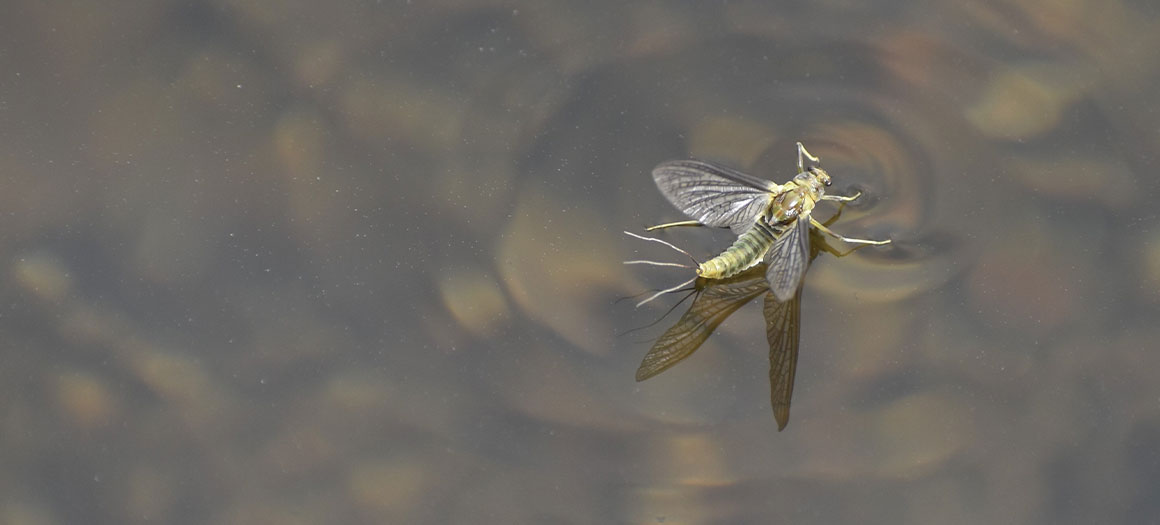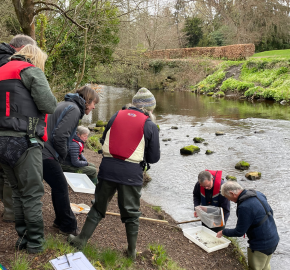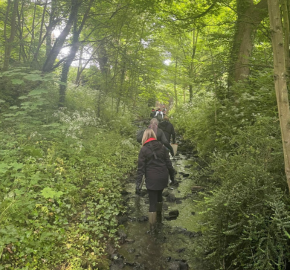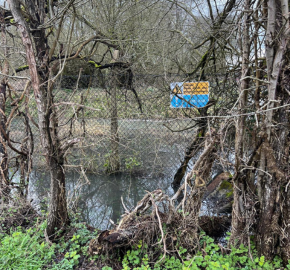Mixing medicines in freshwater, how do invertebrates cope?

Of all the ecosystems on the planet, freshwaters support the greatest concentration of biodiversity. They are also some of the most endangered, with freshwaters haemorrhaging biodiversity faster than any other ecosystem.
In the last decade, it’s been found that virtually every river across the globe contains some mix of common drugs like ibuprofen, paracetamol, and diclofenac. These medicines have only recently started to be considered in water quality testing, and their effects in the environment are poorly documented. One source is residues from medicines that are passed, unused, through our bodies into the sewerage system, and eventually into our rivers.
Medicines: essential to human health
Medicines are essential to the health of humans and domesticated animals. They help us to survive infection, reduce pain and eradicate disease.
But, at what cost to the environment?
However, some of these medicines can be harmful to the environment. Diclofenac, a pain killer, and anti-inflammatory is perhaps the best known environmentally harmful medicine because its effects are dramatic and obvious. It is the cause of the collapse and extinction of vulture populations in Asia and is a threat to recovering European vulture populations.
In freshwater invertebrates effects tend to be more subtle. Changes in development, reproduction and behaviour are the most common. These can lead to changes in evolution and populations structure in ways that are potentially damaging to the species.
One of the main sources of these medicines is wastewater treatment works (WWTWs), which in most cases cannot process medicines efficiently. By examining data from the most recent chemical investigation programme (CIP2), Buglife found that WWTWs are responsible for increased concentrations of certain medicines in downstream surface waters.
Buglife also found that several medicines regularly occur at concentrations greater than current safety limits both up and downstream of WWTWs. In the case of several drugs in the report, there is evidence that invertebrates are affected at concentrations below these limits (e.g., the drugs carbamazepine, propranolol, ibuprofen, venlafaxine, fluoxetine). These effects include stress responses, increases, and decreases in reproduction (depending on the chemical), changes in behaviour that could lead to greater predation, and damage to living cells.
Scientists have also found that when medicines breakdown in the environment, they can produce chemicals that are many times more harmful than the original chemical alone. Diclofenac becomes 6 times more toxic to algae, an important source of food for grazing invertebrates like snails, mayfly, and caddisfly larvae. Meanwhile, when Naproxen, another anti-inflammatory, breaks down it prevents the reproduction of small crustaceans and algae at 4 to 16 times lower concentrations than the original chemical.
What can be done to reduce the impact of medicines in freshwater?
Urgent action needs to be taken to properly examine the long-term effects of medicines in the environment. The biggest concern is how long these chemicals have gone unchecked; we do not know how much damage they are causing. Experiments carried out at concentrations found in the environment are rare. However, it has been shown that adverse effects do increase with time for some drugs, meaning small amounts can cause the same effects over a long period. For others, such as the antibiotic Azithromycin, they lack assessments altogether and their effects on invertebrates are unknown.
Medical drugs are monitored, but they have little to no enforced regulation. Improved evaluation of environmental risks posed by medical drugs must take place. It should include retrospective risk assessments for drugs already in use, assessment of breakdown products, as well as the effects of mixing medicines.
As the most manageable source of pollution, Wastewater treatment facilities must be improved to prevent chemical pollutants from entering the environment. We must also reduce the number of medical drugs entering our waterways before treatment where possible. In part, this could be achieved through changes in education on usage and disposal of medical drugs, while also improving regulation on those with the worst impact. The opportunity to use scientifically proven alternatives to medicines such as blue-green social prescribing could also help to protect our environment.
WildFish wishes to thank Helen Davison (ACCE PhD Student, Department of Ecology, Evolution and Behaviour, University of Liverpool) and Craig Macadam (Conservation Director, Buglife) for their time in preparing this guest blog which highlights another important part of the chemical crisis facing our rivers and biodiversity.
Recommended extra reading:
Benwell, R. 2020. Water quality: the true story, Wildlife and Countryside link, https://www.wcl.org.uk/water-quality-the-true-story.asp
OECD 2019. Pharmaceutical Residues in Freshwater: Hazards and Policy Responses, OECD Studies on Water, OECD Publishing, Paris, https://doi.org/10.1787/c936f42d-en



